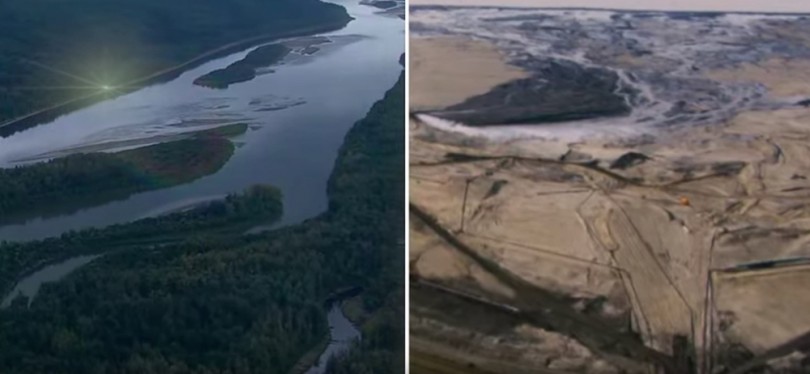aNewDomain — On November 7, President Barack Obama announced the U.S. State Department had concluded Keystone Pipeline XL was not in the best interests of the United States.
— On November 7, President Barack Obama announced the U.S. State Department had concluded Keystone Pipeline XL was not in the best interests of the United States.
The President had vetoed the Keystone XL pipeline bill last February. And, fortunately for the planet, the Senate failed to override it, which left the fate of the TransCanada Keystone XL pipeline up to Obama and the State Department. It took the State Department seven years to come to the conclusion that the Natural Resources Defense Council (NRDC), Sierra Club and most environmentalists realized from the start.
Tar sands are not good for the planet nor anyone living in North America.
Full disclosure: I am a tree hugger, and one who was happy Shell struck out in the Arctic.
In three weeks, Obama will head to Le Bourget, France for the United Nations Conference on Climate Change (COP21). The president can hold his head high after demonstrating real leadership. Had he okayed Keystone, he would have needed to say that the same rules don’t apply to the United States. In denying Keystone, the president said that . . . “ultimately, if we’re going to prevent large parts of this Earth from becoming not only inhospitable but uninhabitable in our lifetimes, we’re going to have to keep some fossil fuels in the ground rather than burn them and release more dangerous pollution into the sky.”
Arguments Against Keystone XL: Safety Concerns
“If it were a car, the first Keystone would be a lemon. And it would be far worse to double down on a proven loser with Keystone XL,” wrote Mike Klink for the Journal Star. As a civil engineer, Klink was one of the inspectors for TransCanada when it built the first Keystone pipeline. As an inspector he saw: “Cheap foreign steel that cracked when workers tried to weld it, foundations for pump stations that you would never consider using in your own home, fudged safety tests, Bechtel staffers explaining away leaks during pressure tests as ‘not too bad’ . . . ”
In 2011, the Keystone pipeline had 12 spills including 840,000 gallons spilled in Michigan, 250,000 gallons spilled outside Chicago and 21,000 gallons of tar sands crude spewed into the air in North Dakota. The pipeline had been in operation less than a year and had also spilled 1.3 million gallons in Alberta showing that Canadians were no safer than we were from tar sand oil spills. And yet TransCanada insisted the Keystone XL would be the safest pipeline ever.
While the State Department pondered Keystone XL, NRDC, Sierra Club and others prepared a safety of tar sands pipelines report that finds using conventional pipes to transport diluted bitumen (aka tar sands) or “DilBit” troubling. Because unlike crude oil, DilBit is a potentially unstable blend of thick raw bitumen and volatile natural gas liquid condensate. (Yikes!)
Environmental Concerns
In 2013, environmentalist and NRDC supporter Robert Redford asked Americans to demand clean energy and say “No” to tar sands in Tar Sands Oil Is Killing Our Planet. The above screenshot from Redford’s short video illustrates the devastating impact extracting tar sands (right) has on forests and wetlands (left) in Alberta, Canada.
In April 2014, Cowboy and Indian members of Reject and Protect went to Washington, D.C. to ask the government to say “No” to Keystone XL.
Why Tar Sands Suck as A Fossil Fuel
Tar sands comprise a gooey, sticky tar-like substance retrieved most often by injecting natural gas into the ground to bring this muck to the surface. Rachel Nuwer reported for Inside Climate News, the average energy returned on investment or EROI is 5 to 1 for tar sands when it is extracted via surface mining. When retrieved from the deep underground by injecting natural gas into the ground a.k.a. fracking, the return is a paltry 2.9 to 1.
So you get less than three units of tar sands oil (bitumen) for one unit of natural gas. Conventional oil has an EROI of about 25 to 1. Huh? It doesn’t take a mathematician to figure out that extracting tar sands doesn’t add up.
The only reason that the Canadian government has shown support for tar sands production is because Canada has vast amounts of this shitty fossil fuel. Just like the USA has vast reserves of dirty, stinking coal. And I think there’s a greater chance that a tooth fairy exists than there’s actually clean coal.
The Most Useful Purpose for Tar Sands: Ridicule
The best purpose for tar sands may be as a ridicule tool. How about we begin with tarring and feathering the 55 Republicans and 7 Democrats that banded together to overturn President Obama’s veto?
In the founding days of our country, circa 1773, tarring and feathering political enemies was quite popular.
If everyone in Congress watched the NRDC video: “Tar Sands Dirty Legacy,” below, they just might get onboard the planet’s Eco-train. And if Prime Minister Justin Trudeau really does want to work with the U.S. on fighting climate change, I hope he will watch it, too.
Bottom Line: Since Keystone XL would transfer tar sands oil from Canada through the heartland of America to the Gulf of Mexico for shipment to other countries, the pipeline isn’t going to benefit the average American. The main folks licking their wounds over the president’s announcement are Canadian and U.S. investors with investments in tar sand and the politicians they’ve been bankrolling.
For aNewDomain, I’m Terry Gardner.
Redford/NRDC and “Tar Sands Dirty Legacy” videos: Courtesy of NRDC.
Reject and Protect video: Courtesy of Reject and Protect. All rights reserved.













